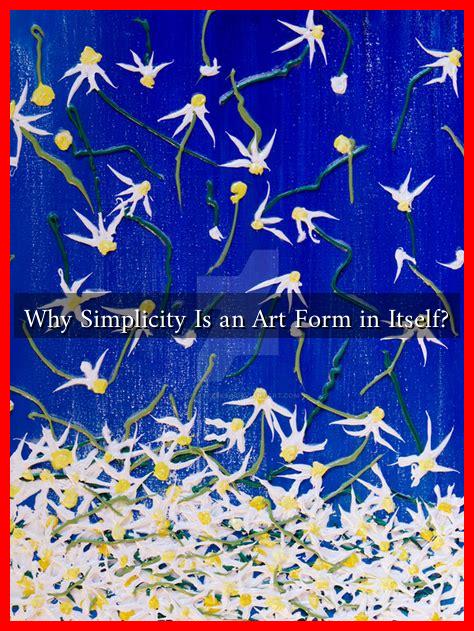-
Table of Contents
Why Simplicity Is an Art Form in Itself
In a world increasingly dominated by complexity, the notion of simplicity stands out as a powerful art form. From design to communication, simplicity has the ability to convey messages more effectively, evoke emotions, and create lasting impressions. This article explores the significance of simplicity, its applications across various fields, and why it is considered an art form in its own right.
The Essence of Simplicity
Simplicity is often misunderstood as a lack of depth or substance. However, true simplicity is about distilling ideas to their core essence. It requires a deep understanding of the subject matter and the ability to strip away the unnecessary. This process can be seen in various domains:
- Design: Minimalist design focuses on functionality and aesthetics without clutter.
- Writing: Clear and concise writing communicates ideas more effectively than verbose prose.
- Technology: User-friendly interfaces prioritize simplicity to enhance user experience.
The Power of Minimalism in Design
In the realm of design, simplicity is often synonymous with minimalism. Renowned designers like Dieter Rams have championed the idea that “less, but better” is the key to effective design. Rams’ ten principles of good design emphasize the importance of simplicity, functionality, and sustainability. For instance, Apple’s product designs, characterized by clean lines and intuitive interfaces, exemplify how simplicity can lead to widespread appeal and user satisfaction.
Statistics support the effectiveness of minimalist design. A study by the Nielsen Norman Group found that users are more likely to engage with websites that have a simple layout. In fact, 94% of first impressions are design-related, highlighting the importance of simplicity in capturing attention.
Simplicity in Communication
Effective communication is another area where simplicity shines. The ability to convey complex ideas in a straightforward manner is a skill that can set individuals apart in both personal and professional contexts. Consider the following:
- Public Speaking: Great speakers like Steve Jobs often used simple language and clear visuals to communicate their messages.
- Marketing: Successful brands like Nike and Coca-Cola use simple slogans that resonate with their audience.
- Education: Teachers who simplify complex concepts help students grasp difficult subjects more easily.
Research indicates that simple messages are more memorable. A study published in the Journal of Consumer Research found that consumers are more likely to remember brands that use straightforward language in their advertising.
The Art of Simplicity in Everyday Life
Simplicity is not just confined to design and communication; it can also be applied to our daily lives. The minimalist lifestyle movement encourages individuals to declutter their physical and mental spaces. By focusing on what truly matters, people can enhance their well-being and productivity. Here are some benefits of embracing simplicity in everyday life:
- Reduced Stress: A simpler life often leads to less anxiety and more peace of mind.
- Increased Focus: Fewer distractions allow for greater concentration on important tasks.
- Enhanced Creativity: A clear mind fosters innovative thinking and problem-solving.
Case Studies: Brands That Embrace Simplicity
Several brands have successfully integrated simplicity into their core strategies, leading to remarkable success:
- Google: The search engine’s minimalist homepage is a testament to the power of simplicity, allowing users to focus solely on their search queries.
- Muji: This Japanese retailer is known for its no-brand philosophy, offering simple, functional products that appeal to consumers seeking minimalism.
- Airbnb: The platform’s user-friendly interface simplifies the process of finding and booking accommodations, making travel more accessible.
Conclusion: The Art of Simplicity
In conclusion, simplicity is not merely a design choice or a communication strategy; it is an art form that transcends disciplines. By embracing simplicity, we can enhance our understanding, improve our interactions, and create more meaningful experiences. As we navigate an increasingly complex world, the ability to distill ideas to their essence will remain a valuable skill. Whether in design, communication, or daily life, simplicity allows us to connect with others and express ourselves more authentically.
For further reading on the importance of simplicity in design, check out Nielsen Norman Group’s insights on minimalism.


